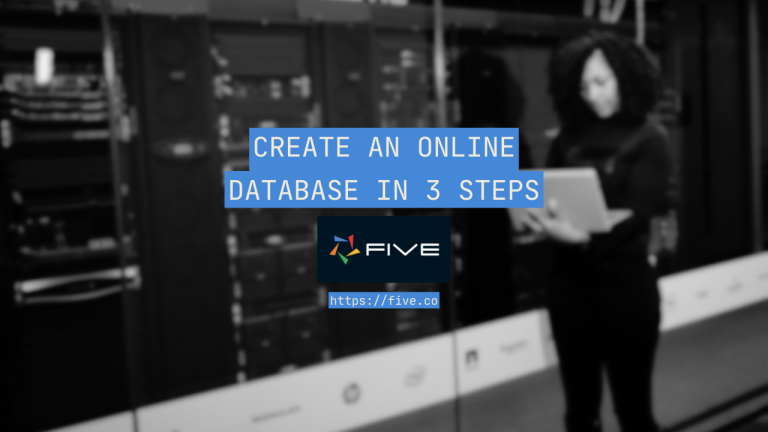The 3 Best Cloud Development Environments
Write, Run, and Debug Code Right Inside Your Browser With These 3 Cloud IDEs
“It works on my machine.” – these are the words every developer dreads. Web-based IDEs, or cloud development environments, can maximize developer productivity and help reduce time delays from working on local machines. They help get code into production as quickly as possible – without the hassle of setting up local environments.
With cloud development environments, you can write, run, and debug code right inside your browser – collaboratively, from anywhere, and with zero setup time.
Packed with the standard features of an integrated development environment (IDE), cloud IDEs bring app development to the web. The advantages? Cloud IDEs make it easy to collaborate on code, deploy to pre-configured development, staging, and production environments, and get rid of the need to install or configure files, SDKs, and plug-ins for your development machine.
Let’s find out how to develop applications in a cloud environment by reviewing 3 popular cloud development environments: Five, AWS Cloud9, and Google Cloud Code.
What Are Cloud Development Environments?
Cloud development environments are in-browser development environments that let developers write, run and debug code on the web. They enable developers to collaboratively write code from right inside their browsers. Cloud IDEs are web-based, and are optimized for the development of cloud-native applications.

Traditional integrated development environments (IDE) give developers everything they need to write, run, and debug code. Typical features of cloud development environments are:
- Write, run, and debug code in your browser.
- Support for popular programming languages, such as JavaScript, Python, or PHP.
- Collaborative development that enables pair programming or tracking each other’s input in real-time.
- Pre-configured cloud environments and automatic connections to cloud instances or Kubernetes clusters.
Cloud IDEs are accessible from any browser, such as Chrome, Firefox, or Edge, and contain many features of a traditional IDE, such as a code editor or syntax highlighting.
Cloud IDEs are sometimes also referred to as online integrated development environments or web IDEs.
How Do Cloud IDEs Transform Development
Setting up a new environment for your development can be quite cumbersome and time-consuming. First, you need to install the IDE and plugins, then you configure your stack, and last you need to make sure your development environment is matched to your production environment.
When working in teams, setting up a development environment locally usually also involves comparing your setup with someone else’s to figure out differences or what’s going wrong.
Cloud IDEs transform app development the same way Figma has transformed interface design. They let developers be productive without delay, work on code together, and make it easier to collaborate on code.
With a cloud development environment, developers no longer need to rely on local machines’ hardware and configurations. They also come with pre-configured cloud environments and computing resources, making it faster to release software applications to end-users. And, when working in teams, all developers work on the same environment, so no time is wasted comparing configurations.
Unlike in traditional IDEs, in a cloud IDE, development work no longer needs to be tied to a single computer or server setup, giving developers the flexibility to access and work on their projects from anywhere.
Now, let’s take a closer look at 3 cloud development environments: Five, AWS Cloud9 and Google Cloud Code.
The 3 Best Cloud Development Environments
Five: A Cloud Development For Rapid App Development

Five is a rapid application development environment that gives you everything you need to rapidly build and deploy data-driven, responsive web apps on a pre-configured cloud infrastructure. Five comes with native support for JavaScript, TypeScript, and SQL. It uses Google’s V8 high-performance JavaScript and WebAssembly engine to execute code.
Primarily designed to build bespoke business applications rapidly, Five comes with useful pre-built features, such as a database editor and table wizard for MySQL, an auto-generated MUI user interface, authentication, and SSO.

Five is an opinionated cloud development environment: it prescribes an application development workflow for building out your data, logic layer, and UI layer. By following Five’s best practices, developers can rapidly spin up production-ready cloud apps, accelerating the build-to-launch process in comparison to more traditional IDEs.
Five builds cloud-native, responsive web applications that utilize Docker and Kubernetes for container orchestration and cloud deployment. Apps developed in Five run in any browser and are responsive by default: no additional code is required to make sure that they render well on desktop, tablet or mobile.
Five also comes with a lot of helpful developer tools, such as syntax highlighting, autocompletion, a built-in audit trail, and a debugger. This makes it easy to stay on top of your codebase, even for complex applications. Five can be integrated with Open-AI to interpret or debug code inside the cloud IDE.
Five promotes code reuse through event-driven programming. Functions can be attached to client- and server-side events, for example. Five also takes care of application deployment by providing pre-configured, cloud-hosted development, staging, and production environments for your application.
Every application developed in Five is hosted on Five’s managed infrastructure (which includes database backups, for example), but for those who want to move off-platform, there is the option to export their database as a MySQL dump. Five also supports multiple instances, so that developers only have to maintain one codebase to manage several deployments.
Last, Five can be extended through libraries or custom plug-ins, making it an extensible cloud development environment.
To get started with Five, sign up for free access and start developing right away – no setup required!
AWS Cloud9: A Full-Fledged Web IDE

Introduced in late 2017, Cloud9 is AWS’ cloud-based integrated development environment (IDE) that lets you write, run, and debug code in your AWS environment with just a web browser.
Cloud9 is a purpose-built tool that accelerates application development on AWS. Tightly integrated with AWS’ cloud services, such as EC2 for the compute underpinning your instances, Cloud9 lets you get code into production as quickly as possible.

Setting up an environment in Cloud9 on AWS takes just a few seconds. Cloud9 comes with terminal access to the managed Amazon EC2 instance that is hosting your development environment. This makes it easy for you to quickly run CLI commands and directly access or configure AWS services, such as the AWS region your application is deployed to or find out how many S3 buckets you are using. Cloud9 can also be used with your own server.
Cloud9 further comes with a fully functioning code editor, syntax highlighting, code completion, and step-through debugging. Suited for collaborative development and pair programming, it moves app development into the browser for solo developers or larger teams. Sharing environments in Cloud9 is as easy as adding a new user to the cloud IDE.
Code written in Cloud9 is stored in an AWS code repository. Cloud9 also supports Git to manage the source control lifecycle.
One advantage of Cloud9 is that it lets you build serverless applications with ease. It preconfigures development environments with all the SDKs, libraries, and plugins required for serverless applications. It also lets you easily write or debug AWS Lambda functions, a highly scalable compute service that lets you run code without provisioning or managing servers.
Cloud9 supports a lot of different programming languages, such as Ruby, PHP or JavaScript.
Note that Cloud9 does not perform automatic backups. This needs to be configured manually.
A free tier is currently not available. To spin up an AWS Cloud9 environment, an AWS account is required.
Google Cloud Code: Google’s Desktop IDE Extension

Last, let’s take a closer look at Google Cloud Code.
Google Cloud Code is not a cloud development environment, but a set of IDE plug-ins that let you write, deploy, and debug cloud-native applications.
It is compatible with your existing IDE, such as VS Code, JetBrains IDEs, or Cloud Shell Editor. It brings Google’s cloud APIs, as well as Duet AI straight into your favorite, offline IDE. This gives it the advantage of integrating into existing developer workflow, rather than being a new tool developers have to learn.
Similar to Cloud9, Cloud Code is tightly integrated with Google’s cloud services. The Cloud Code extension brings many useful Google Cloud services straight into your IDE, such as AI assistance, Kubernetes support, cluster management, or real-time code reviews. It also makes it easier and faster to write YAML files for your cloud-native deployment.
Cloud Code’s biggest benefit is that it reduces context switching: instead of constantly going back and forth between your IDE, documentation and Cloud Console, you have everything in one place, making the overall development process of cloud-native, containerized applications on Google Cloud more seamless. Cloud Code also comes with code snippets and in-line documentation, for example.
To get started, install the Cloud Code extension for Visual Studio Code or IntelliJ (or other supported JetBrains IDEs). Cloud Code can be used free of charge and works with any Kubernetes cluster, be it on Google Cloud or any other cloud.
The following languages are supported: Go, Java, Node.js, Python and .NET Core.
Building Cloud-Native Applications: Cloud Development Environments
In this article, we reviewed three tools that enable developers to rapidly build and deploy cloud-native applications: Five, AWS Cloud 9 and Google Cloud Code. Each tool has its pros and cons:
- Five is an in-browser, rapid application development environment with a free trial.
- AWS Cloud 9 is a full-fledged IDE that tightly integrates with AWS services and is not available free of charge.
- Google Cloud Code is a free extension to your existing desktop IDE.


